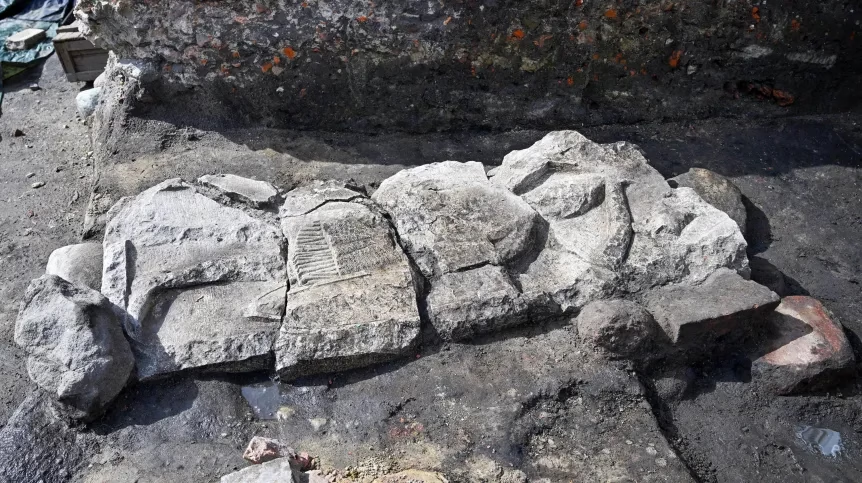Gdańsk, Poland – During ongoing archaeological excavations in the historic center of Gdańsk, researchers have uncovered a remarkable find: a tombstone featuring the image of a knight, believed to date back to the 13th century. The stone relief depicts the knight in full chainmail armor, holding a sword and shield — offering a rare glimpse into medieval military burial traditions.
The excavation site, located at the intersection of Čopowa, Sukiennicza, and Grodzka Streets, has been under investigation since 2023. Locals often refer to the area as “zamczysko” — the old castle — reflecting its long historical significance.
Knight’s Image Reveals Rich Detail
Archaeologist Sylwia Kurzyńska explained that the tombstone is made of Gotland limestone and measures approximately 150 cm in length. The knight’s figure is clad in chainmail, with a sword resting on his right shoulder and a shield by his side. Parts of his chain boots and leggings are also preserved.
The figure is framed by architectural arcades, which experts believe date the piece to the late 13th or early 14th century. According to Kurzyńska, such an elaborate depiction suggests the knight was not an ordinary citizen but likely a commander or high-ranking noble.

Who Lies Beneath the Stone?
The identity of the person buried beneath the slab remains unknown. However, the quality of the armor and the heroic stance of the knight — upright, with a raised sword — indicate he was a figure of significant social or military stature.
An Archaeological Treasure Trove
The knight’s tombstone is not the only discovery at the site. Previous excavations revealed the remnants of a wooden church from 1140, over 250 human burials, and six additional stone tomb slabs. These finds underline the area’s importance as a religious and ceremonial center in medieval Gdańsk.
Historians note that the Teutonic Knights built a fortified castle here between 1335 and 1341. The structure was later dismantled by Gdańsk’s residents in 1454.
Tombstone Moved to Museum for Preservation
The knight’s slab was recently transported to the Gdańsk Archaeological Museum, where it will undergo urgent conservation. Gotland limestone is known to oxidize rapidly when exposed to air, which can lead to surface flaking and loss of detail.
Marcin Tymiński, spokesperson for the Pomeranian Regional Conservator of Monuments, called it “the most media-worthy archaeological discovery of the season.” A special expert committee has been appointed to determine the future of the site’s remaining architectural remnants.





